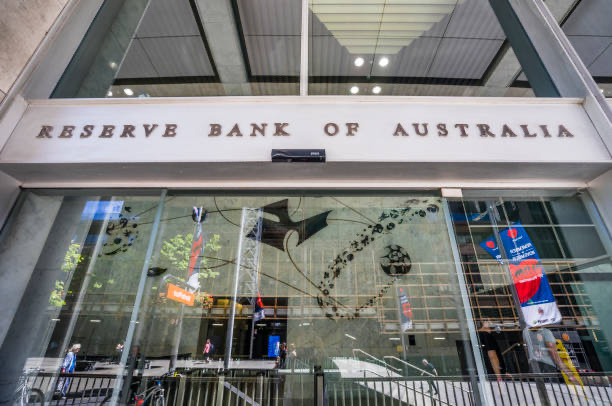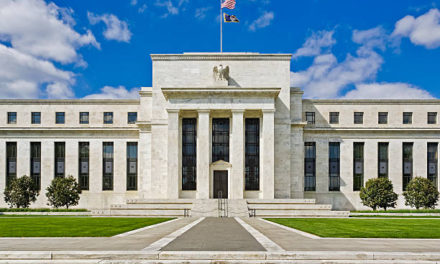Published September 24. 2024 7:59 am est

Editor in Chief,
NEWSMOVESMARKETSFOREX ®
- RBA leaves interest rates unchanged at 4.35%
- Inflation still moderately higher than the RBA target rate of 2-3%
- GDP growth remains week with a drag in real disposable incomes and consumer spending—particularly discretionary spending.
- High participation rates, elevated job vacancies, and stabilized average hours worked indicate a tight labor market
- Geopolitical uncertainties further complicate the landscape, posing additional risks to economic stability.
RBA Holds Cash Rate Steady Amid Ongoing Inflation Challenges for the Australian Economy –
In a pivotal meeting today, the Reserve Bank of Australia (RBA) Board opted to keep the cash rate target unchanged at 4.35 percent, with the interest rate on Exchange Settlement balances remaining at 4.25 percent.
This decision is particularly significant as inflation in the Australian economy continues to remain stubbornly above the RBA’s target range, prompting heightened scrutiny of the nation’s economic landscape.
While inflation has notably decreased from its peak in 2022, it still falls short of the RBA’s 2-3 percent target. As of the June quarter, underlying inflation, represented by the trimmed mean, was recorded at 3.9 percent.
This aligns closely with forecasts presented in the May Statement on Monetary Policy (SMP). Although the monthly Consumer Price Index (CPI) indicated a decline in headline inflation in July, further reductions are expected temporarily due to various state and federal cost-of-living relief measures.
However, RBA projections indicate that a sustainable return to the target range will not occur until 2026, underscoring the ongoing challenges faced by the Australian economy. For over 11 consecutive quarters, underlying inflation has remained above the midpoint of the target, indicating a persistent struggle to rein in rising prices.
The Board’s central forecasts, published in August, anticipate that underlying inflation may return to the target range late in 2025, with a gradual approach to the midpoint in 2026.
This outlook reflects an assessment that the country’s capacity to meet demand is weaker than previously estimated, evidenced by the resilience of inflation and the robust state of the labor market.
GDP Growth remains weak:
Recent economic data has confirmed that GDP growth remains weak, with earlier declines in real disposable incomes and ongoing restrictive financial conditions weighing heavily on consumer spending—particularly discretionary spending. However, it is noteworthy that aggregate consumer demand, which includes expenditures by temporary residents such as students and tourists, has demonstrated unexpected resilience.
Australian Labor Markets Offers Mix Picture:
This highlights the complexities of the Australian economy, where certain sectors are managing to thrive despite broader challenges. Labor market indicators offer a mixed picture of the economic fabric.
While wage pressures have eased, labor productivity has stagnated at 2016 levels, despite some improvements over the past year. Employment growth averaged 0.3 percent per month over the three months leading to August, with the unemployment rate stabilizing at 4.2 percent—up from a low of 3.5 percent in mid-2023.
High participation rates, elevated job vacancies, and stabilized average hours worked indicate a tight labor market, though there are signs of gradual easing. This dynamic is crucial for understanding the Australian economy’s capacity to rebound in the face of ongoing inflationary pressures.
RBA Short Monetary Policy Outlook:
The RBA’s assessment remains that current monetary policy is appropriately restrictive and functioning as intended. However, uncertainties loom large. The central projection anticipates a rebound in household consumption in the latter half of the year as income growth headwinds diminish.
Yet, there is a palpable risk that this recovery may be slower than expected, potentially resulting in continued subdued output growth and a more significant deterioration in the labor market. The ramifications of such outcomes could have far-reaching effects on the overall health of the Australian economy. Adding to the domestic challenges are uncertainties in the global economic environment.
While some central banks have initiated policy easing, they remain cautious, balancing risks associated with weaker labor markets and rising inflation. The outlook for the Chinese economy has softened, which has had a noticeable impact on commodity prices—key drivers for the Australian economy.
Geopolitical uncertainties further complicate the landscape, posing additional risks to economic stability. Against this backdrop, the Board emphasizes that returning inflation to target is its highest priority.
This commitment aligns with the RBA’s mandate for price stability and full employment, both of which are crucial for the Australian economy’s long-term sustainability. While a temporary decline in headline inflation is anticipated, underlying inflation remains a more reliable indicator of inflation momentum, and it continues to be unacceptably high.
The Board’s latest projections indicate that achieving the target range will take considerable time, reinforcing the need for vigilance against potential upside risks to inflation.
The RBA remains steadfast in a data-driven approach to guide its policy decisions, paying close attention to developments in the global economy, financial markets, and domestic demand trends.
The Board’s determination to restore inflation to target remains resolute, with a clear commitment to implement necessary measures to achieve this crucial outcome.
Conclusion:
The Australian economy must navigate these turbulent waters, and the RBA’s actions will be vital in steering it towards stability and growth. In summary, today’s decision to maintain the cash rate underscores the RBA’s cautious approach amid persistent inflation and complex economic conditions.
With a clear focus on returning inflation to its target range, the Board remains vigilant and prepared to adapt its policies as new data emerges.
The interplay of domestic and global factors will continue to shape the economic landscape, and the RBA’s commitment to achieving its goals will be critical in fostering a stable and resilient
Australian economy in the coming years. As the nation grapples with these challenges, the path forward will require careful navigation and proactive measures to ensure sustainable growth and economic stability.
Please be sure to catch all the latest High Impact Major Market moving News Events on the Forex Weekly Economic Events Recap September 23, 2024.
We at NEWSMOVESMARKETSFOREX ® presents the latest financial and economic central bank news from around the globe.

We will see what this week ahead highly awaited MARKET MOVING Interest Bank rates decision report numbers brings us. For more Developing intriguing Central Bank Stories be sure to visit our Central Bank Breaking News Here:  News Moves Markets Forex “real time digital currency news”, works to provide market intelligence, connecting our audience with a mix of the most latest insightful currency news in the Foreign exchange markets. Providing the Latest and the greatest in depth developing global central bank stories and financial news to traders and investors around the continent.
News Moves Markets Forex “real time digital currency news”, works to provide market intelligence, connecting our audience with a mix of the most latest insightful currency news in the Foreign exchange markets. Providing the Latest and the greatest in depth developing global central bank stories and financial news to traders and investors around the continent.
Connecting People to the markets through the power of information from a Black perspective.







